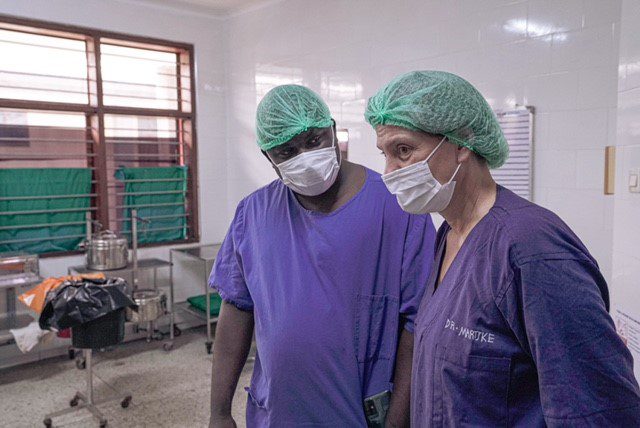Our gynaecological colleague at St. Walburgs' Hospital in Tanzania, Dr. Kasoga, has long shown great interest in improving his surgical skills. During our assignment in the fall of 2021, this wish was reaffirmed and, as there is indeed a great need for the hospital in this area, various options were discussed as to how we could best help him here.
The decision was made to purchase a laparoscope. After professional installation and instruction in Nyangao, it can then be put into operation. Initially, it will be used for gynecological procedures, such as ectopic pregnancies.
A laparoscope is used for minimally invasive operations in the abdominal cavity. This means that the procedure can be performed through small skin incisions and large open wounds are avoided. During a laparascopy, the abdominal cavity is inflated with carbon dioxide in order to create sufficient space for the operation in the cavity between the abdominal wall and the organs. The risk of suffering a post-operative wound infection is greatly minimized due to the small access points. However, as most of these devices work with the aid of gas, their use in Tanzania was considered very critical in the past. There were concerns that incidents with escaping gas due to improper handling or device defects could not be resolved without endangering patients and staff. However, research by our gynaecologist Dr. Solveig Groß has shown that laparoscopies are already being performed in India, for example, without gas. Instead of gas insufflation, the abdominal wall is lifted with a lifting handle.
After checking the functionality of these variants, Ms. Groß pulled out all the stops and actually managed to procure such a device from KARL SOTRZ SE & Co. KG to procure such a device. The necessary additional equipment was also organized.
Ms. Groß will now fly to Tanzania in September and take the device with her. She will set it up on site and train Mr. Kasoga step by step in the operation of the laparoscope and the technique of laparoscopy. After her two-week stay, she will be 'replaced' by her colleague Dr. Kurt Bischofberger from Germany, who will then continue the training. Mr. Kasoga will then be able to perform laparoscopic surgery independently and pass on his knowledge to his staff. In order to avoid problems arising in the event of complications or uncertainties, opportunities have also been created to clarify these directly via remote learning platforms with the help of the German specialist staff.
Following a successful introduction and test phase in gynecology, further staff are to be trained so that the technology can also be used in other surgical areas, such as appendectomies



